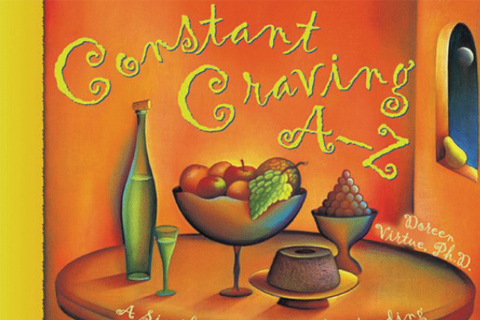Are You REALLY Hungry?

Do you know the difference between emotional and physical hunger? How often do you find yourself in the following situations?
You have an argument with your significant other and, all of a sudden, you find yourself eating a pint of Ben and Jerry’s.
Your kids are being kids but your patience is wearing thin, and you find yourself standing in front of the pantry or refrigerator surfing for that certain something…but nothing looks that good.
You have a lousy day at work, go out for dinner, and have a “what the heck” moment, eating until you are stuffed.
You are working on the computer and eating something out of a bag or container and, all of a sudden, your hand hits the bottom and you realize you can’t even remember what you just ate.
These are examples of emotional eating. Everyone has, at some point in his or her life, had an emotional eating episode; however, it may become a problem when you find yourself eating more for emotional than physical reasons on a regular basis. Additionally, emotional eating can trigger guilt and shame, compounding an already altered mood, and, therefore, lead to restricting eating or binging. Typical emotions that may lead to emotional eating are anger, stress, loneliness, boredom, sadness, anxiety, or even happiness. With practice, you can learn the difference between the two types of hunger and experiment with different techniques to use when emotional hunger is intense. I often use the descriptions of the two hunger types from Doreen Virtue’s book Constant Craving A-Z.
Emotional Hunger
Quick onset: You may just be plugging along during the day and, all of a sudden, you are famished beyond reason.
Craving one specific food: This is usually something chocolate, salty, crunchy, or high fat. I have yet to meet someone who craves a salad topped with wild salmon and fresh vegetables when emotional.
Generally paired with an upsetting situation or emotion: Often, you will find yourself eating right after you experience the emotion.
Mindless eating: You eat without paying attention or even being able to recall what was eaten.
Passing the point of fullness: You may eat until you are uncomfortable.
Promising to start your diet tomorrow because you feel bad about what you just ate. Doreen Virtue said, “[T]he paradox of emotional overeating is that the person eats to feel better and ends up beating him/herself up for eating cookies, cakes, or cheeseburgers.”
Physical Hunger
It is patient, builds gradually, and is based on stomach hunger. It’s probably been several hours since you have eaten a meal or a snack; you feel your stomach grumbling, or you may even feel symptoms of low blood sugar.
A variety of foods sound good to you. You may be thinking of a particular food, but if it’s not available you, you don’t get upset or overthink it.
Emotions don’t dictate your eating schedule. You eat when you feel a physical sensation of hunger in your stomach.
You are aware of what you are eating; you take the time to prepare something you are interested in and know will fuel your body. You may also take the time to prepare a place setting, sit down when you eat, and focus on your food—not on work, a newspaper or magazine, or the TV.
You can stop when you are satisfied, leaving food behind if you have served more than you ended up needing.
You eat to fuel and nourish your body. Virtue said, “When the intent behind eating is based in physical hunger, there is no guilt or shame. The person realizes that eating food, like breathing oxygen, is a necessary behavior.”
If you find yourself in a pattern of emotional eating, there are a number of techniques you can utilize to help break the cycle:
Acknowledge you are not physically hungry and that food cannot solve the problem at the moment.
Have a list of self-care activities that substitute for eating and commit to trying one of them when you find yourself refrigerator or pantry surfing: listening to music, deep breathing, taking a short walk, journaling, pinning away on Pinterest, calling a friend, or playing a game on your smartphone.
Set a timer on your phone. Try waiting anywhere from 10–20 minutes to see if the urge passes.
Sometimes using food journals is an effective way to see patterns of emotional eating. Track your hunger and fullness at each meal, taking note of your emotions as well. After some time, you may start to see patterns, such as eating while watching TV or when you are bored.
Last, but not least, if you are really craving something like a piece of chocolate, it’s better to simply have some chocolate in moderation. If you don’t, then you may end up eating your way through the pan-try…and still eating the chocolate.
Learning to eat for primarily physical reasons can take some time, but the more you practice, the better you get. You will also be able to more quickly recognize the difference between physical hunger and emotional hunger.






